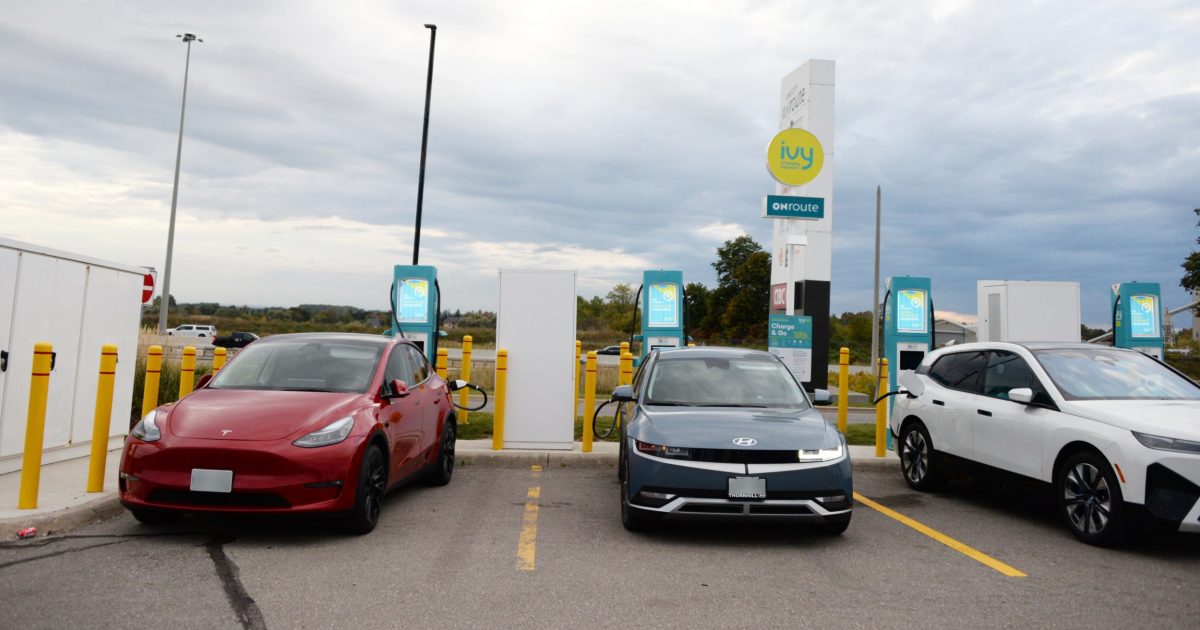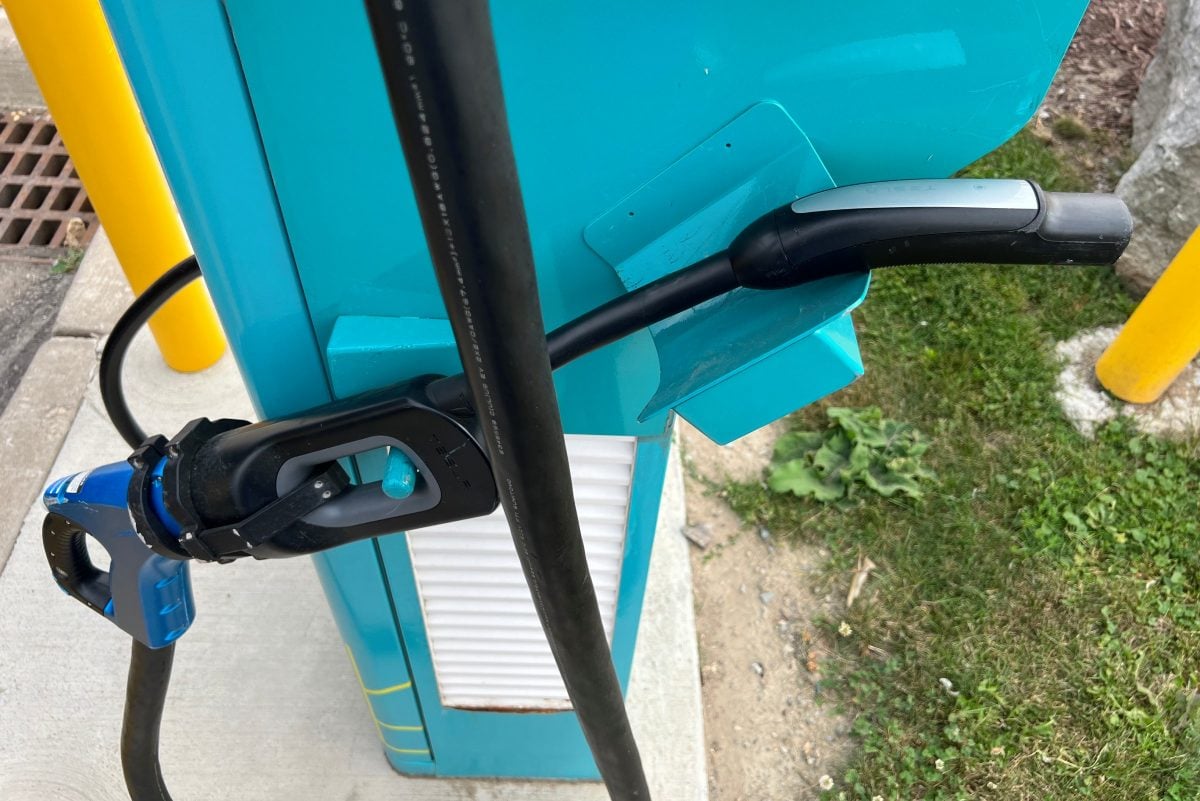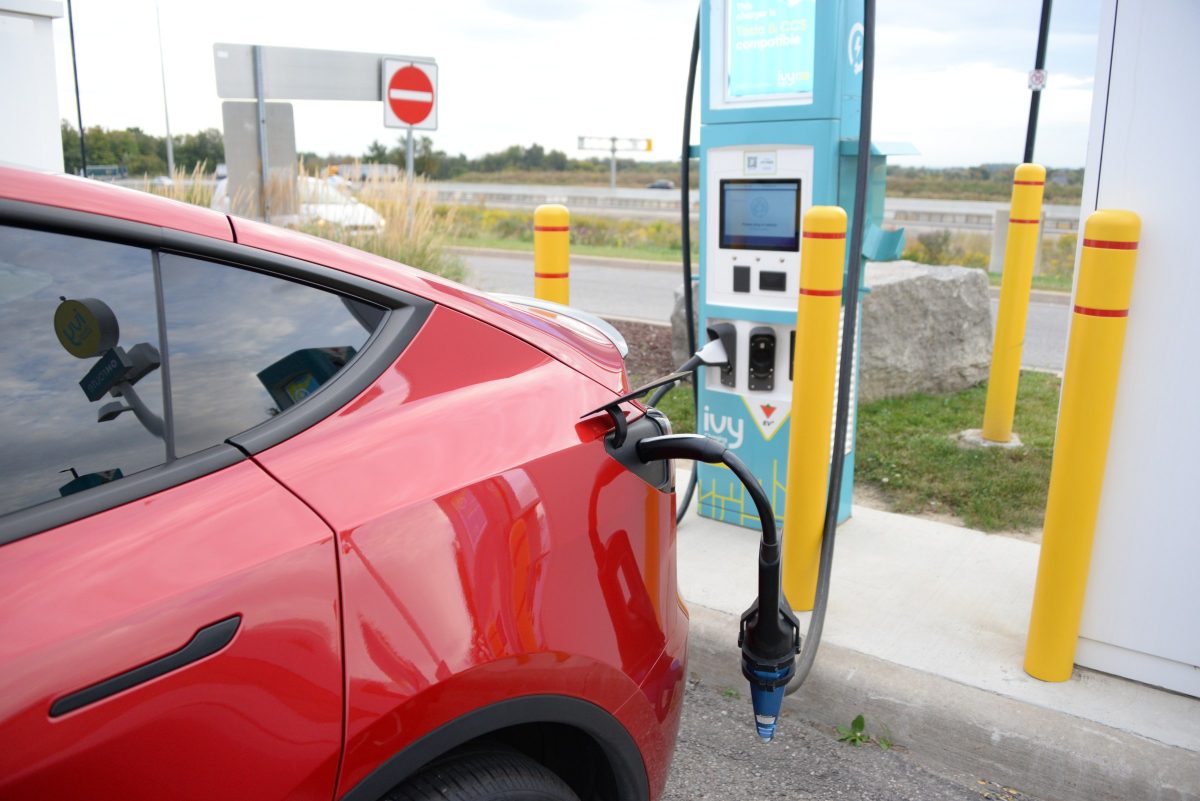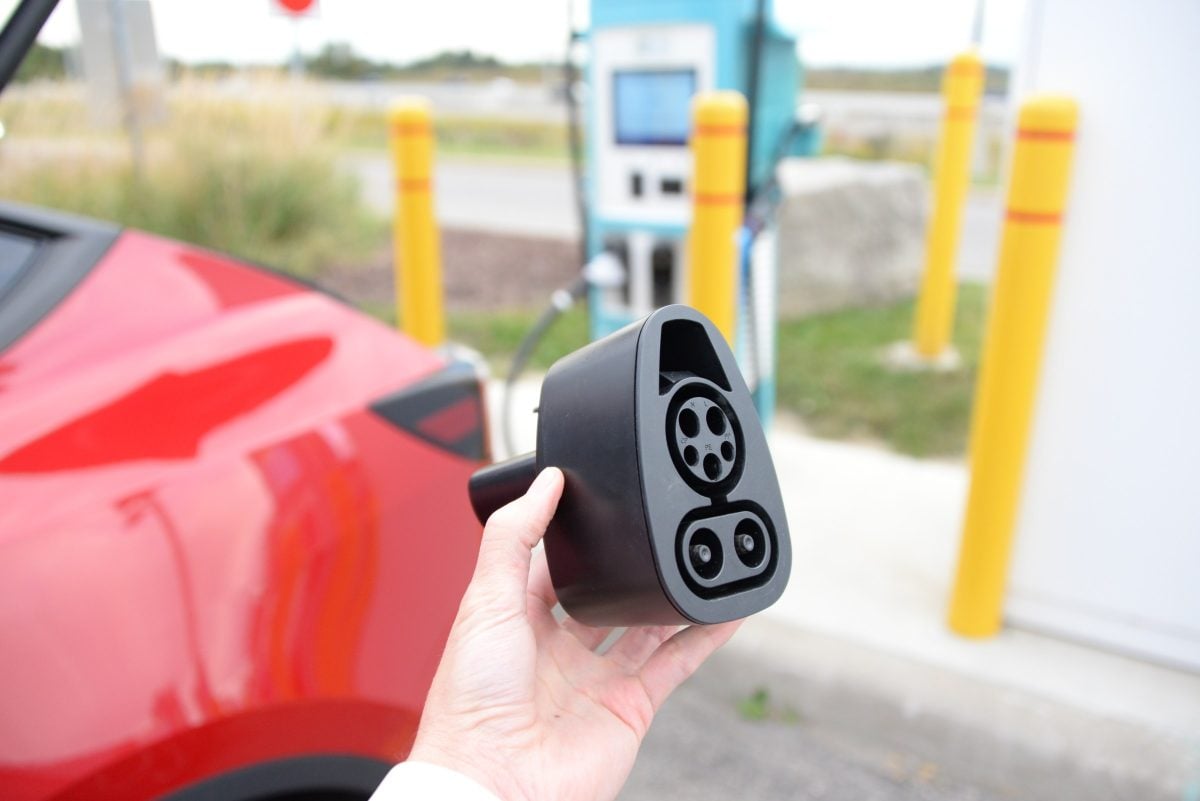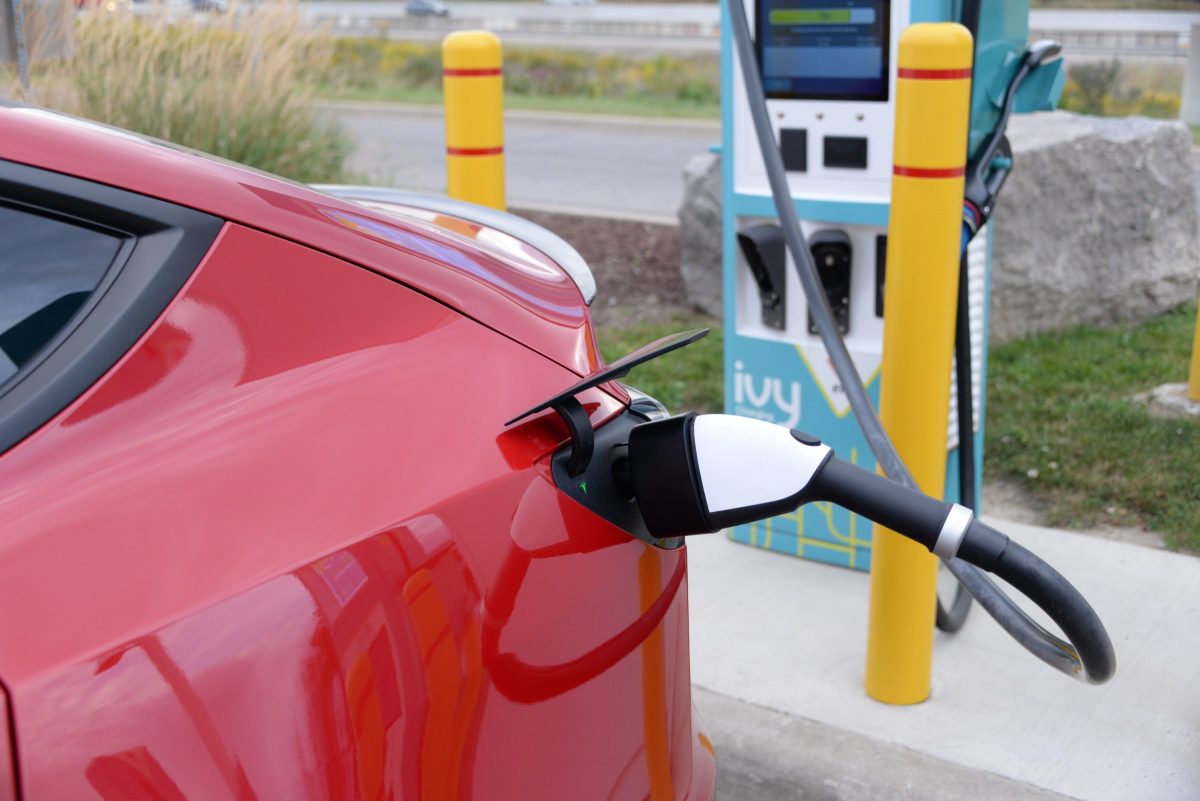When driving in the Canadian province of Ontario, you will often encounter Ivy Network charging stations at ONroute rest stops along the 400-series of highways. Ivy is the exclusive charging partner for ONroute service centers, and are perfect place to stop along long road trips. Without leaving the highway system, the ONroute stop will have clean restrooms, a Tim’s, and generally better amenities than at Tesla Superchargers or Electrify Canada locations.
Can Tesla Drivers charge at Ivy stations?
Yes, it is possible, and considerably less expensive than charging at Tesla Superchargers.
[2024 Update: Ivy used to be an inexpensive alternative to Supercharger stations last year. But with the switch to kWh billing, most fast Ivy stations have hiked their prices to ~$0.62 per kWh, which is significantly more expensive than most Supercharger stations that typically cost around $0.50-$0.61 per kWh. The 50kW DC stations from Ivy are still billing $23.73 per hour. If your average charging speed is around 46kW, that would equate to ~$0.50 per kWh. Which is a competitive price, but a much slower charging speed.]
There are two ways to charge a DC-fast charge a Tesla car on the Ivy network:
1. Ivy Chargers with Tesla (NACS) connectors
The Ivy network initially had CCS and CHAdeMO connectors at their stations, leaving Tesla drivers out in the cold. However, Ivy was recently installing adapters to convert the old CHAdeMO connectors to Tesla (NACS) connectors, allowing Tesla drivers to plug in. The caveat though, is that it’s still using the CHAdeMO electronics, so the charging rate is limited to only 50 kW, while the CCS connectors at the same location will deliver 100 or 150 kW.
50 kW might be okay if you are stopping for 30-45 minutes, to get back some meaningful range. However, it is a bit unfair that those connectors are priced at the same hourly rate as the 100+ kW CCS chargers. We’ll take what we can get.
As of the time of this article, not all Ivy stations have Tesla adapters built-in, but most if not all Ivy stations at ONroute locations should have them It is common to see half the stalls be CCS+CHAdeMO, and the other half being CCS+Tesla. You can confirm plug availability using the Ivy app in advance of arrival.
2. Bring your own CSS to Tesla (NACS) adapter
During the last year, CCS to Tesla adapters have exploded in popularity. These (somewhat bulky) adapters allow Tesla drivers to charge from any CCS level 3 charging station in North America, opening up a whole sea of charging options for Tesla drivers.
Ivy chargers at ONroute locations will have power output ranging from 50-200 kW, but most are 100 or 150 kW. I managed to briefly peak at 128 kW charging a Tesla Model Y at a 150 kW station.
We maintain a list of good CCS to Tesla adapters on this page and recommend every Tesla owner keeps one in their car during the next few years while the industry transitions from CCS to Tesla (NACS) connector. In the meantime, a Tesla driver with a CCS adapter will have the best of both worlds: Superchargers and CCS-equipped stations.
Tips for charging Tesla on Ivy Network Chargers
- There is no plug-and-charge functionality like at Tesla Superchargers, and there are no payment terminals on site. All of your interactions are handled through the Ivy smartphone app (iOS and Android) and your personal account. Drive up, plug in, and initiate the sessions from the app.
- If you are a frequent user of the Ivy Network and have a mailing address in Ontario, you can request an RFID card to be sent to you. This way, you can avoid the hassle of the phone app and initiate your charging sessions by tapping the RFID card on the scanner.
- Tesla cars will precondition and preheat their battery packs while navigating to Tesla Supercharger locations, but this will not happen while you are navigating to an ONroute Ivy charger. Unfortunately, there is no way to manually precondition a Tesla battery, so we have to rely on an old trick.
When you are about 15-20 minutes away from the Ivy charging station, set the in-car navigation to a nearby Supercharger, but actually go to the Ivy station. (You may want to mute your navigation voice when doing this) Your call will begin to preheat the battery when it thinks it is going to a Supercharger.
This is especially important during the Canadian winter months when cold batteries charge very slowly unless preconditioned before arrival.
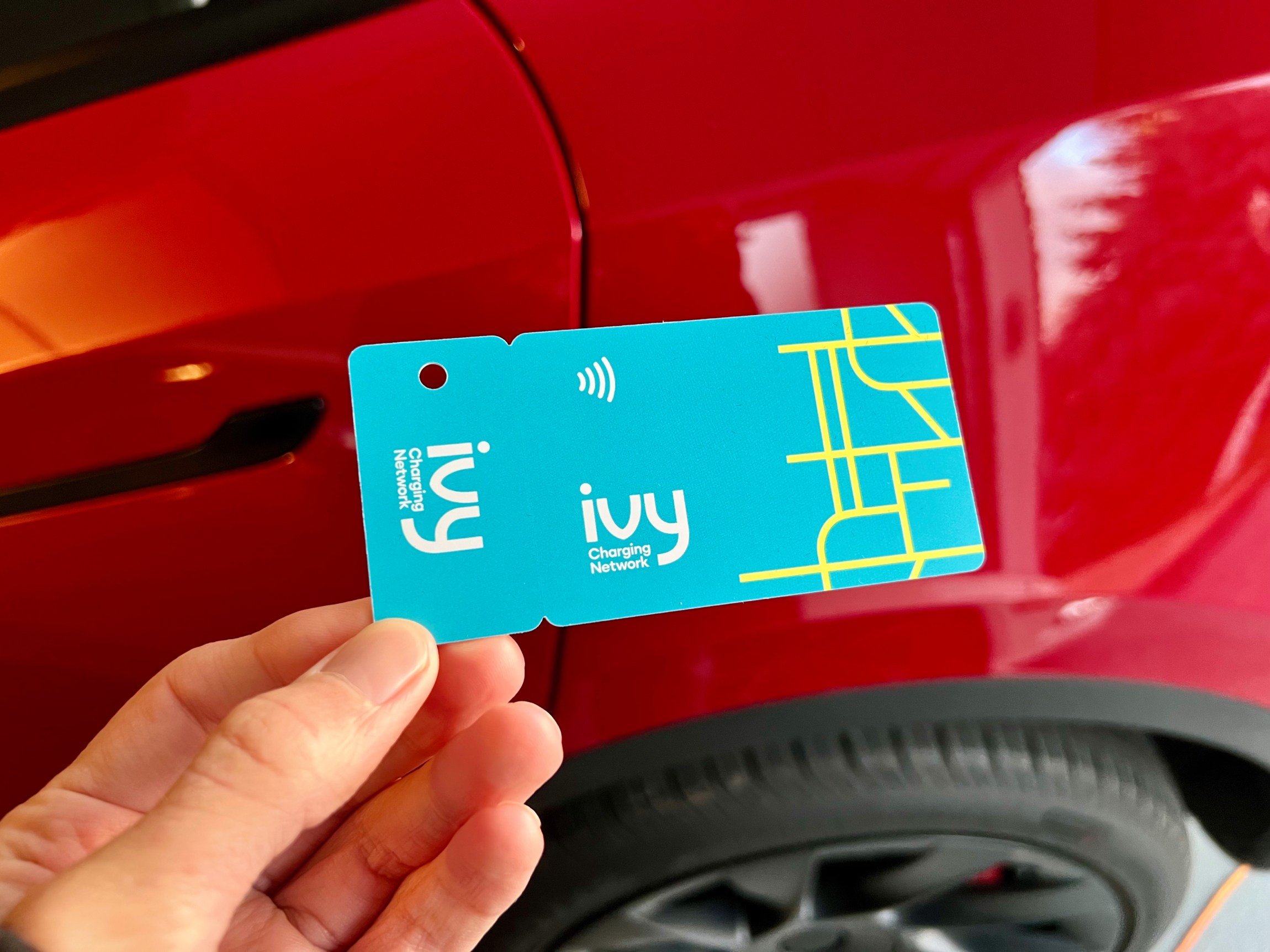
Related
- Can You Charge A Tesla On The FLO Charging Network?
- Can You Charge A Tesla On The EVgo Network?
- Can you charge a Tesla on the ChargePoint network?

